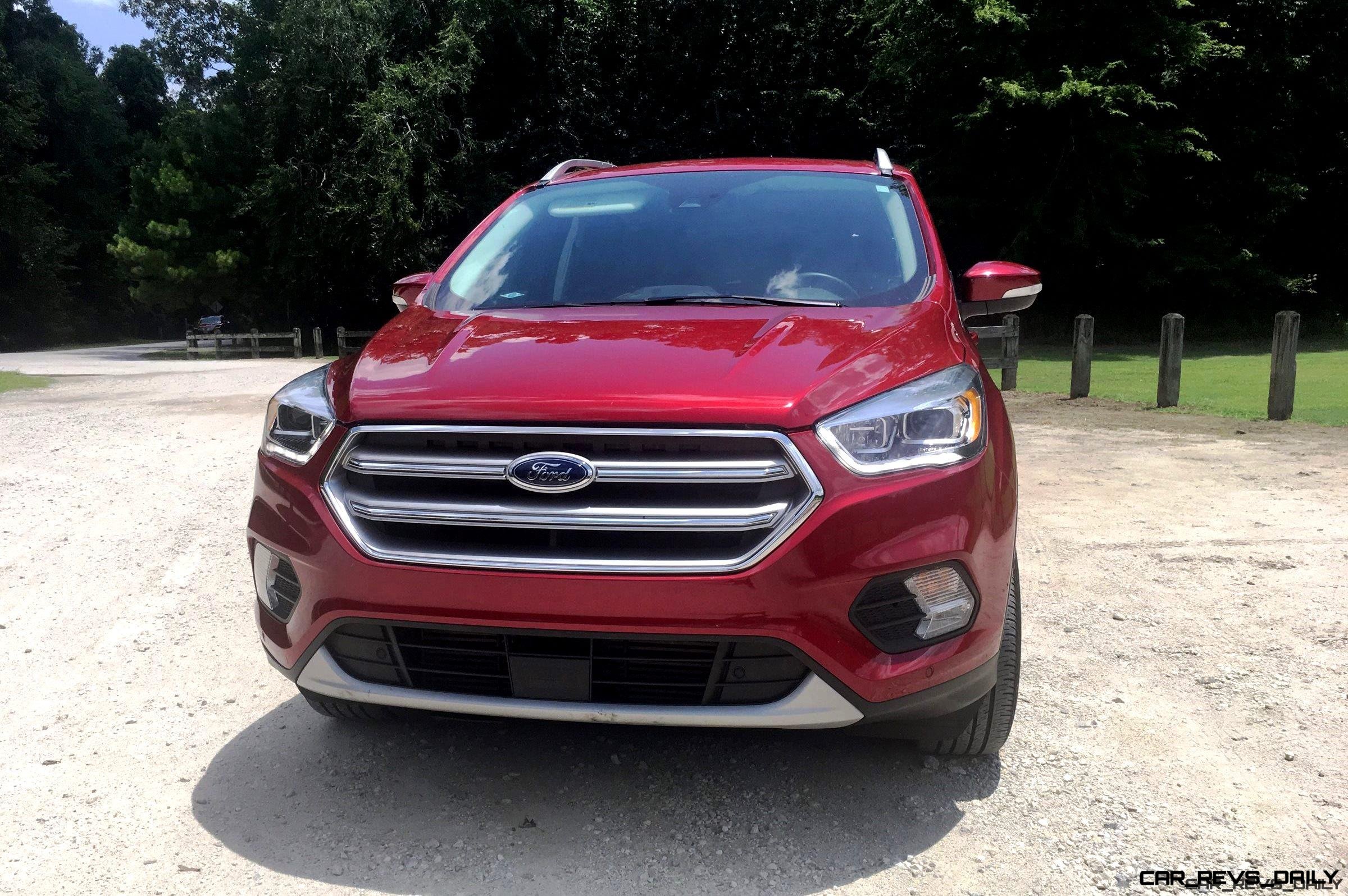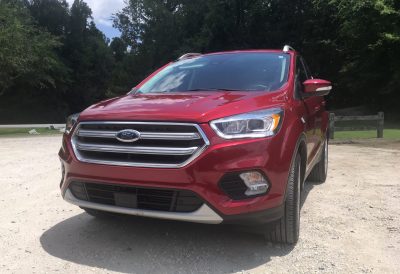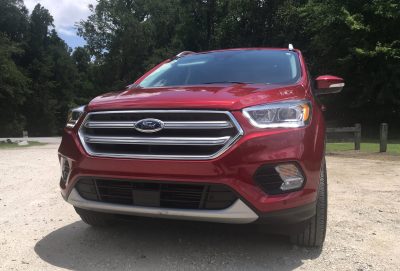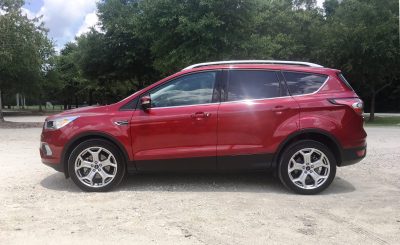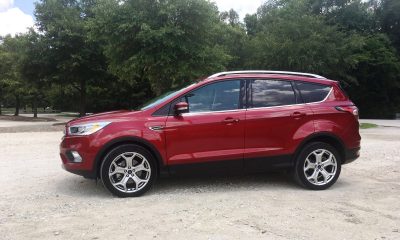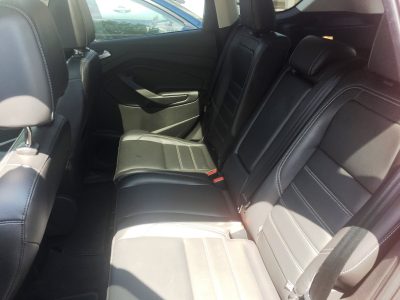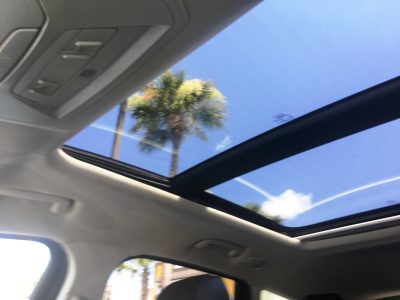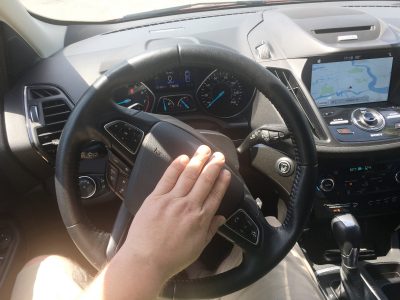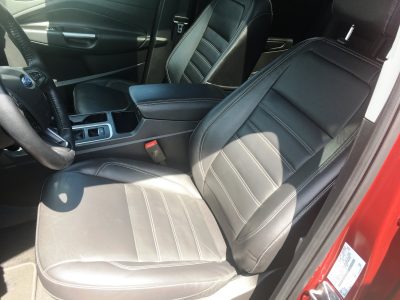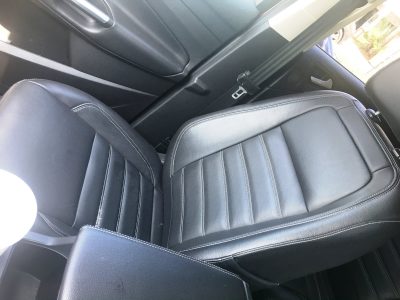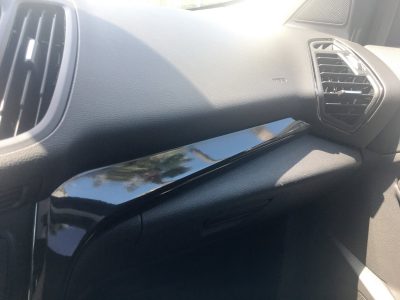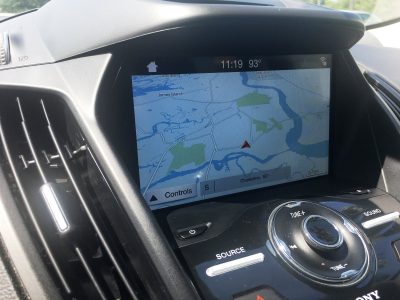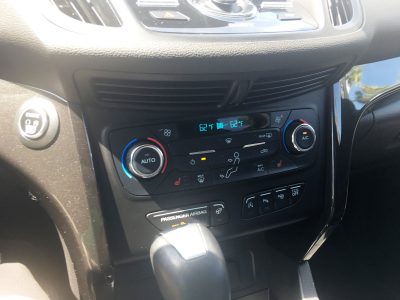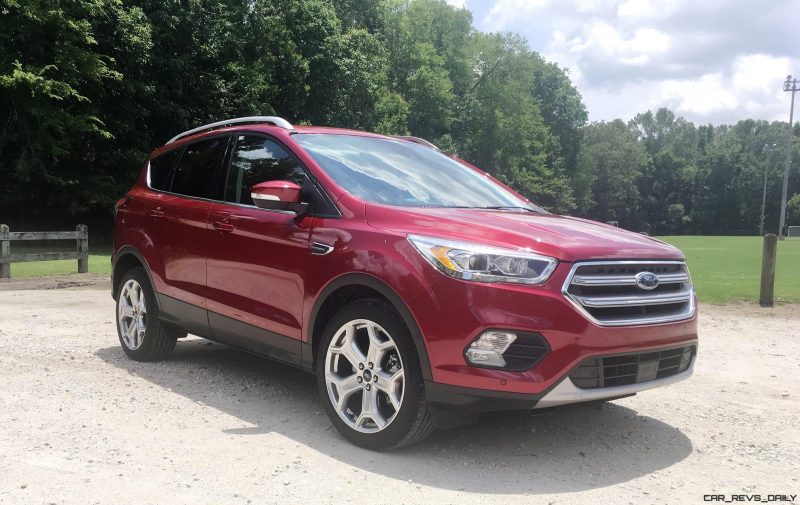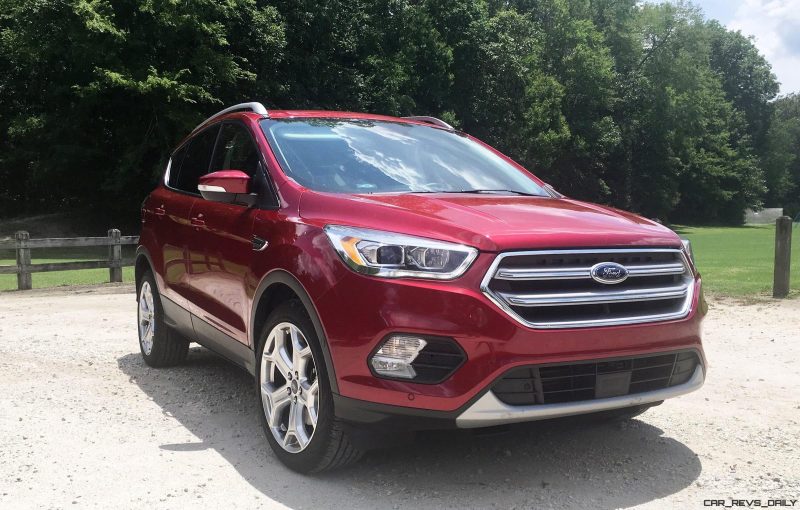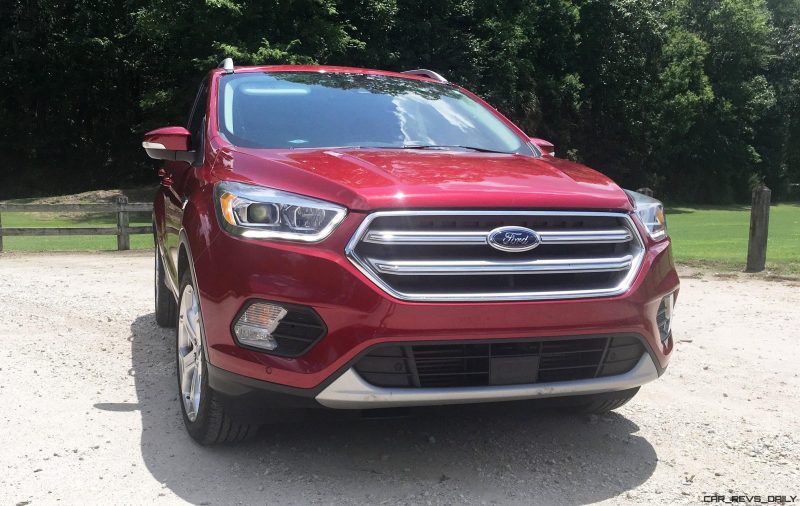How time flies!
Ford launched this platform for the Escape around 2012 and it was a revelation for the compact crossover segment. Handling and engine shared with the Range Rover Evoque, but with pricing $20k less? Sign us up.
Five years later and this newly-refreshed 2017 model is not nearly as appealing. Is this lightest-of-light refreshes for 2017 enough to keep Escape competitive with its arch-rivals RAV4 and CR-V? How about the dozens of other new CUVs with the same $25-$40k pricerange?
We spent a week with the new Escape Titanium EcoBoost 4WD – the tippy top drivetrain and trim level.
Despite the familiar looks inside and out, Escape still shines as one of the best-driving compact crossovers around. It is genuinely sporty in corners in a way that the Jeep Cherokee or Chevy Equinox cannot begin to match.
But is that enough? Huge sales of nearly 300k units a year would indicate that Escape is still plenty competitive. Let’s structure this review with the normal Exterior, Interior, Performance and Price section headings.
EXTERIOR
Manufacturers are always eager for the slightest change of appearance or content. It lets them slap that redesigned or the rarely-true “All New” tagline on their marketing.
In the Escape’s case, the car is nowhere near new. This redesign brings a new grille, front bumpers and lighting to Escape. LED accents on this Titanium trim form a puppy-dog facial expression with the eyebrows up. It does look different than before but not, we’d argue, any better.
In addition, the LEDs are that old-fashioned kind with visible individual dots instead of a continuous line of white light.
The xenon lowbeams are much more welcome for their functional improvement. Escape now has sharp and crisp nighttime lighting, and rarely needs its halogen highbeams engaged.
The new grille is off-putting. It is mounted lower and more vertically onto the Escape nose but sits slightly unhappily in its surroundings. Silvery brightwork for the inner grille, lower splitter and roof rack does lessen the amount of chrome on the car. But there is still plenty of brightwork.
As before, there are no USA Escapes with fully painted bodywork. This is a shame – the Euro Escapes with this option look sharp and modern.
For our tester, this means a huge swath of the lower body, fenders and bumpers have inches of black plastic cladding. It is pseudo-off-roady but mostly just looks downmarket and cheap in 2017.
In profile, Escape is unchanged versus before.
In the rump, the Escape has one of the least successful makeovers in recent auto-design history. It looks worse than before with slightly slimmer taillights (now LED lit on the Titanium) and a wide piece of body-color plastic across the upper tailgate. It almost looks like the old lights are under this trim piece…
This Escape even wore the optional 19-inch alloys for an extra 700 clams. They do help the Escape look credibly sporty next to most CUV rivals. Insult to injury? This boring paintwork costs an extra $400.
Pretty faint praise indeed for the Escape’s exterior design. Yes, it is a world better than the boxy first-gen model that was on the market forever, but certainly not a head-turning silhouette like the new CX-5 or new CR-V.
2017 Escape might be the Renee Zellweger of facelifts: looking weird and worse than before somehow.
INTERIOR
If the exterior revamp underwhelmed, then the cabin is not likely to be a strong point for our Escape test.
And as soon as we touched the vinyl-feeling leather, it was clear this Escape has not been to the New-Ford charm school of cabin materials. The steering wheel is also wrapped in some of the most plastic-y hides in the car business.
For a top trim level like Titanium, this is woeful once you consider pricing that is thisclose to 40 grand with options.
One highlight point of the Escape’s 2017 interior is its new Sync3 system. This brings Apple Carplay for the first time, although upgrading the display audio to Nav still costs an extra $800.
Other cabin options help dramatically: the $1500 moonroof is delightful for its speedy operation and great size. Really lets the front and back seat passengers both enjoy the sky above.
The driving position is suitably sporty to match those big rims outside. You can genuinely sit low and enveloped in the Escape, with more lateral support than CR-V or RAV4 provide in their sportiest trims.
Unfortunately for Escape, the seats themselves are pretty cramped. The whole cabin is cramped up front, sadly, with the giant center stack encroaching into what is already a small space. Combined with chintzy, econo-box-thin central armrest and PlaySkool-hard door plastics, you really do not have an sense of premium quality or space inside.
The back seat and trunk are less woeful, but still suffer from too-small seats. As ever, there are giant holes in the bottom cushion of the back seat for the belt buckels to pass through. These holes also eat phones and make it hard for dogs to stand on the back seat.
As a final kicker, the foot-actuated trunklid does work! For open and close! How do we know? Because while loading the trunk with groceries, apparently we triggered it with our foot by accident. Cut to the tailgate smacking me in the forehead like Grace Mugabe.
PERFORMANCE
Power, speed and handling!
Here is the Escape’s only real redeeming feature in our hands. The $1300 245HP EcoBoost turbo four is better than ever. Paired with a conventional six-speed automatic and on-demand AWD, the Escape shoots off the line and out of corners like a hot hatch.
This motor has gobs of torque available at all times, and a satisfying run to the redline with more and more HP coming on as revs rise. The upshifts are slightly labored and the Escape’s steering lacks feel.
But truly, in the CUV segment, Escape is not only the quickest in 2017 but also the most entertaining.
Part of this is surely down to the Focus-shared tuning of the suspension, and of course the truck’s Euro roots. However they did it: Escape is truly fun to fling around on-ramps. Passing is easy and there is very little engine roar from inside the cabin.
Versus Cherokee V6 (which is quicker, actually, in a straight line), the Escape is virtually understeer-proof. It hangs on well past when your face is against the glass. Cherokee is awkward around any fast corners, as is RAV4. Both of those cars will be squealing tires and flashing ESP lights while Escape dances through slalom maneuvers.
Being the “4WD” model does help roadholding and balance in corners. It lets the Escape be unstickable in dry or wet weather. No snow or ice to test how fast power shifts to the back, but still impressive.
So Escape is really fun and nimble to drive, in general. This is its major strong suit.
With this engine, it also becomes fairly rapid as well. We highly recommend the extra EcoBoost outlay.
PRICING
Escape sells like hotcakes and the low entry prices are a big part of that achievement. There is huge value in this machine at Focus prices of the low $20s. Our truck, on the other side of the price sheet, loses its value equation right when it passed $35k.
$32k for the Titanium 4WD trim’s base price seems okay, but lacks equipment. You still need $7k in options to get things like Nav and moonroof.
While the active parking system comes standard with Titanium, you still need to shell out $600 more bucks for a pretty lousy and slow adaptive cruise system.
All in with delivery, the Escape test car rings up $39,010. Very shaky ground here – there are a dozen other CUVs we’d have over the Escape at this price.
SUMMARY
Escape is fun and easy to drive. It is the perfect starter SUV because it keeps that plucky, vivacious spirit of most compact cars alive and well. Just taller and slightly more useful!
We came away knowing Escape has a lot of unique driver appeal – but that its cabin felt too small and too depressing to make up for its frumpy looks and high pricetag.

Tom Burkart is the founder and managing editor of Car-Revs-Daily.com, an innovative and rapidly-expanding automotive news magazine.
He holds a Journalism JBA degree from the University of Wisconsin – Madison. Tom currently resides in Charleston, South Carolina with his two amazing dogs, Drake and Tank.
Mr. Burkart is available for all questions and concerns by email Tom(at)car-revs-daily.com.

